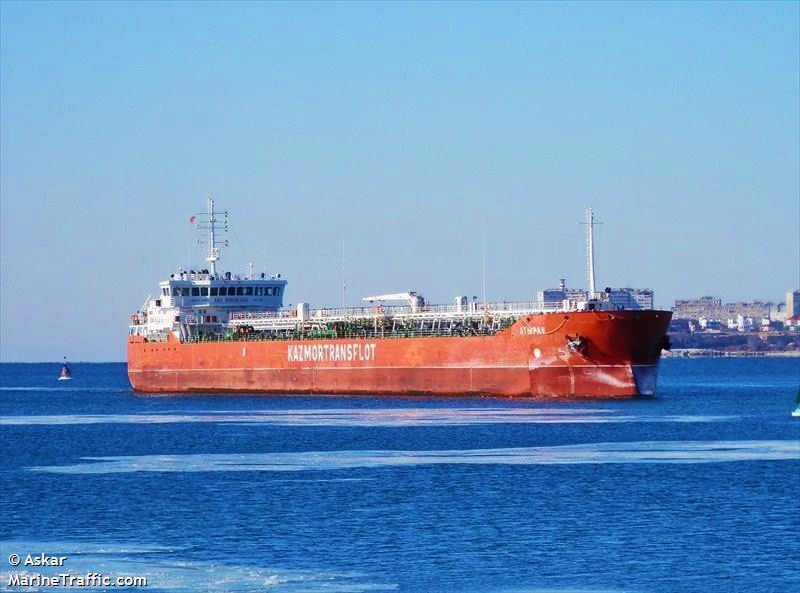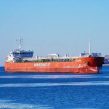
Land-Locked Kazakhstan Plans to Build a Blue-Water Commercial Fleet
Publication: Eurasia Daily Monitor Volume: 12 Issue: 141
By:

Kazakhstan plans to expand its shipping fleet on the Caspian Sea and to acquire, for the first time, a blue-water one (Np.kz, July 23). Its maritime strategy is aimed to allow this Caspian-littoral Central Asian republic both to take advantage of the cost-savings of ship transport and to make itself less dependent on foreign shippers, including Russian ones. The Caspian Sea, however, is essentially isolated from the world’s other seas and oceans (aside from an existing canal connecting it with the Black Sea via internal Russian territory—see EDM, May 5, 2014), leaving Kazakhstan a landlocked country. Therefore, Kazakhstan’s ability to build and maintain a true blue-water fleet would require agreements with countries like Iran and Turkey, which may put Astana at their mercy at some point in the future. And because closer relations with these regional neighbors would be seen as yet another indication that Kazakhstan intends to pursue its own course internationally, it will put Astana on a collision course with Moscow. Bilateral Russian-Kazakhstani tensions will be most likely to emerge immediately in the Caspian, which the Kremlin wants to turn into a “Russian lake,” and somewhat later in the Indian Ocean and more generally.
During the first two decades of its independence, Kazakhstan positioned itself economically as the intersection point of an east-west rail, pipeline and highway system linking China and Europe (see EDM, December 13, 2013; May 20, 2015), and a north-south network linking Russia with the countries of southwest Asia (see EDM, September 22, 2014). But three developments have led Astana to conclude that it must look further afield to secure its economic development and political independence.
First, moving goods by ship is much less expensive and less politically problematic given worldwide rules. Consequently, over time, more goods will be transported by sea rather than by land routes. As a result, Astana recognized that the two networks it had counted on might be less profitable than it expected, with various countries choosing to use ships rather than trains or trucks for long-distance trade. Russia and China have already reached that conclusion, especially given climate change and the prospective opening of the northern trade route through the Arctic.
Second, oil and natural gas require pipelines at least to transit these energy resources to where they can be put on ships. However, Kazakhstan has concluded that, in the future, the export of these raw materials will compose a declining share of its economic interactions with the rest of the world. This conclusion stems both from the fact that Kazakhstan is seeking to expand its industrial production and because this Central Asian republic wants to expand the import of consumer goods and other durables. Thus, its earlier commitment to a “pipeline first” approach has faded.
And third, Kazakhstan has recognized that unless it builds its own shipping capacity, it will be at the mercy of those who do; and it has now decided that it wants to build up its maritime fleet in the Caspian. Kazakhstan has exhausted the capacity of Aktau and is building a new, larger and more modern port at Kurik, along with ships to carry goods across the Caspian to Azerbaijan and the West and to Iran and the South. Moreover, its government has now announced that Kazakhstan plans to purchase and/or build a blue-water maritime fleet for the Indian Ocean and abroad (Np.kz, July 23).
These are the drivers of this policy, but the triggering event for Astana’s announcement of a plan to open “a sea path to Eurasia” likely was the sudden potential Kazakhstan sees in using Iranian ports for its ships. The possibility of negotiating such a bilateral arrangement has grown substantially, in Kazakhstan’s view, thanks to the recent deal between Iran and the P5+1 (United States, France, United Kingdom, Russia, China and Germany) on limiting the Islamic Republic’s nuclear program. In the absence of such cooperation with Tehran, it is difficult to see how Astana could count on having established home ports for its future fleet or using that fleet to boost its international trade turnover by 20 percent over the next five years—as it pledges to do.
The Kazakhstani authorities say they will complete the outfitting of Kuryk by December 2016 and will simultaneously begin building and purchasing ships for Caspian and blue-water service. They add that the new port will allow them to dramatically expand trade with Azerbaijan and Iran and that new deep-water ships will allow them to expand trade with the rest of the world. Indeed, in announcing plans to build such a fleet, Kazakhstani officials said the possibilities for their economy as a result were “limitless.”
Kazakhstan set up a shipping company in 2013 but it has not been active beyond the development of the new port. Now, officials say, Astana will acquire 14 deep-water ships and work on establishing Kazakhstani terminals and other facilities in Iran, Lithuania, Russia and China—and eventually in other countries around the world as well.
This highly ambitious program may or may not be carried out. Kazakhstan has the funds, and it appears to have reached agreements with both Iran and Azerbaijan to increase its shipping with them. The big problem is likely to be with Moscow which will inevitably view Kazakhstan’s efforts as an attempt to escape from the Russian sphere of influence and as challenging Russia’s dominance of the Caspian and possibly its own shipping arrangements with China.
Moscow can and most likely will throw whatever monkey wrenches it can into the works. But Kazakhstan, a landlocked country in the middle of Eurasia, is on its way to building an ocean-faring fleet—and that is a lesson other similarly situated countries may draw encouragement from.




